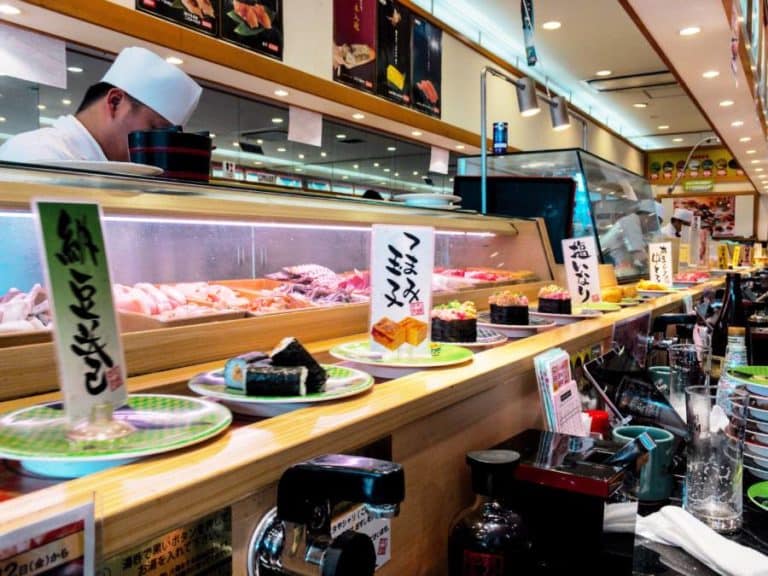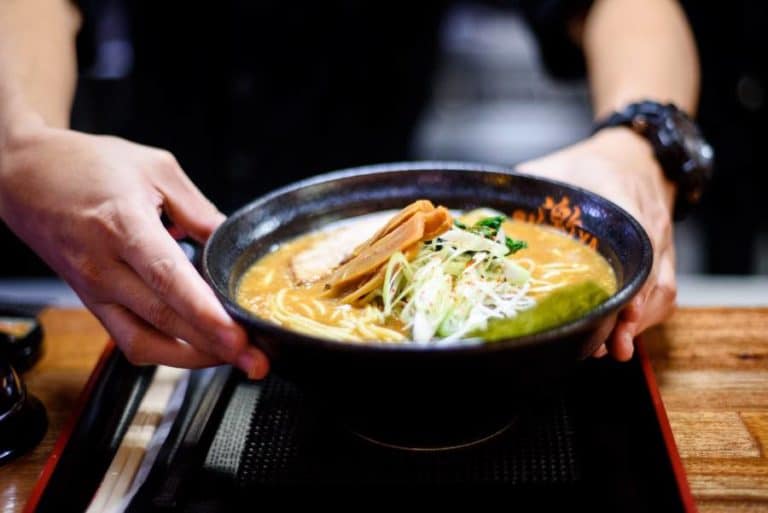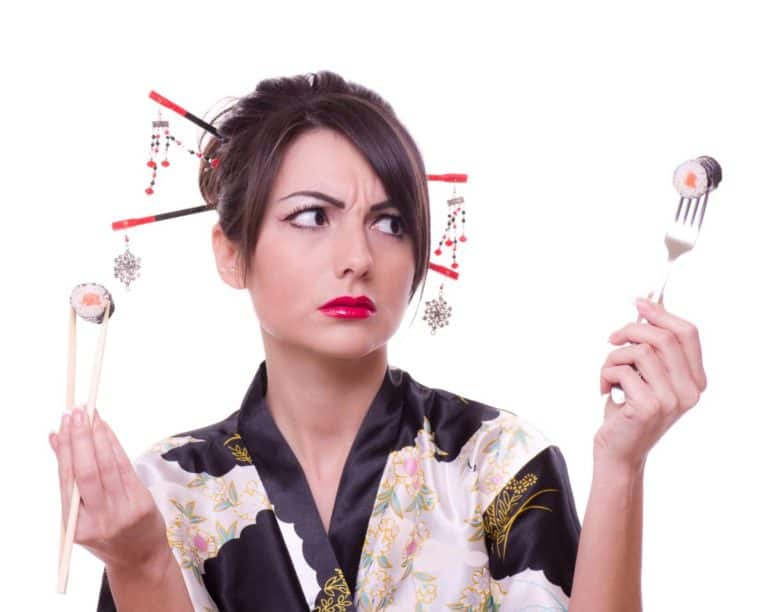Why is Pizza so Expensive in Japan?
I’ve been getting this question for a while now, and I always answer it in the same way: It’s because Japan is an island.
On top of that, Japan also has some of the highest rates globally for importing goods.
Therefore, no matter which city you’re in, there is bound to be imported that will be more expensive than the equivalent elsewhere.
As an Italian, this topic is in my culture, and later in this post, I will show you an exciting fact, so keep reading!
Why is Pizza in Japan expensive?
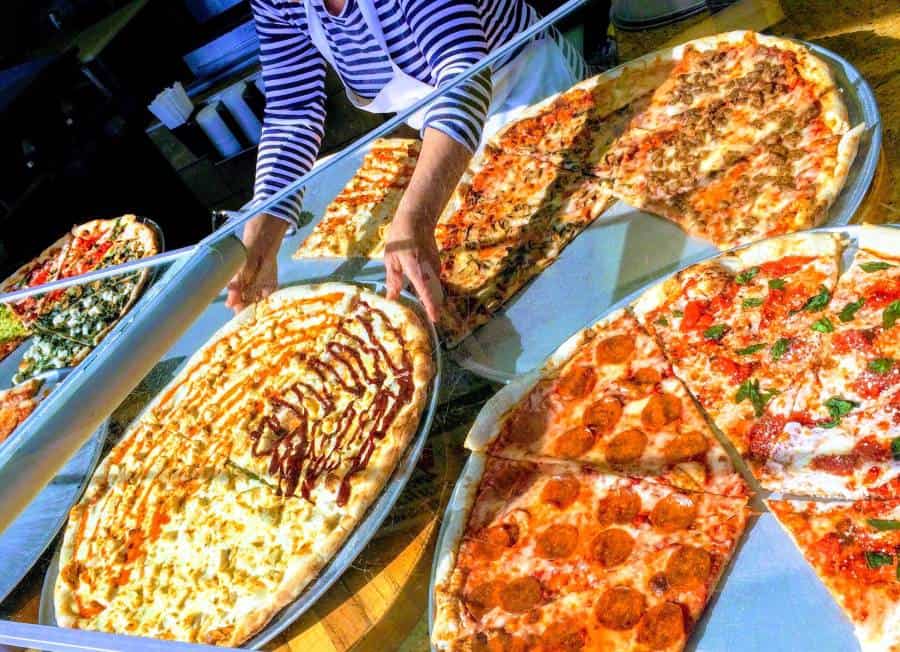
Because cheese is expensive to import, it makes sense that pizza in Japan would also be subject to these influences.
But I believe three other factors play a huge role in the price of not only pizza. But food in general in Japan.
Everyone should keep this in mind when they think about why food is so expensive in Japan.
- The first factor, and most important of all, is labor costs. In Japan, labor is not cheap compared to most other places worldwide. Making this effect even more decisive is that no foreign or immigrant workers would be willing to work for a lower wage than what Japanese people would ask.
- Another factor is the size of the country relative to its population. If we compare Japan to a country like France, we notice that not only does the land of the rising sun has more people and a higher density per square meter. It is a small country with a high population.
| Country | Area | Population | Density |
|---|---|---|---|
| France | 640,679 km2 | 67,413,000 | 116/km2 (300.4/sq mi) |
| Japan | 377,975 km2 | 125,360,000 | 334/km2 (865.1/sq mi) |
France is about twice as big as Japan.
As such, they can grow their vegetables and fruit to avoid the high costs of imports. Japan is too small for that, depriving the country of the luxury of producing its food.
3. Finally, there is another element I would like to point out: taxes.
I’m not talking about sales tax here; most countries have sales tax to pay for most of their expenses using the taxes people pay for buying things.
I’m talking about something more like the inheritance tax or gift tax. (more here)
This tells you that anything you’re giving away to someone else is not yours anymore; therefore, it’s also subject to taxes.
Japan has some of the highest taxes globally (sales included), making every bite we take slightly more expensive.
As a result of these factors, it’s probably easy to see why food in Japan is so much more expensive than in other countries.
Other reasons why pizza costs more in Japan
Japan’s agricultural industry is almost non-existent, so it makes up for not importing too many crops.
However, Japan has the highest livestock ratio, meaning they have to import animal feed and meat and dairy products, which cost a lot, especially in Japan’s costly grocery stores.
This is why it might be cheaper in some cases to eat out than to cook at home: Cooking at home saves you money on groceries and entitles you to free rice and miso soup, whereas when you eat out, these come at an additional cost.
I want to posit that it is not pizza. Specifically, that’s expensive but rather the culture of eating out.
However, I will grant you Pizza Hut (the company) has stores in Japan.
They are also considered upscale restaurants where the prices are similar to what you expect to pay for any other chain restaurant (i.e., Ootoya).
So as far as cheap pizza goes, there is a bright side: Japan does have its pizza chains, which are more geared to the average consumer and their income.
To name a few: Sun-coast Pizza, Shakey’s Pizza Parlor, and Royal Host Pizza Bar (Royal Host also has the distinction of being the largest pizza chain in Japan).
One difference in Japanese pizza is that pepperoni does not come standard on every pizza you order there.
There are, however, some specialty pizzas that do have pepperoni as a topping–and they’re pretty good too!
Interesting Fact: As an Italian, I want to tell you something about the most famous pizza in the USA (I think), the pepperoni pizza.
Pepperoni is not what most people think outside Italy. What people call peperoni is Salame or Salame piccante (Spicy).
- Peperoni
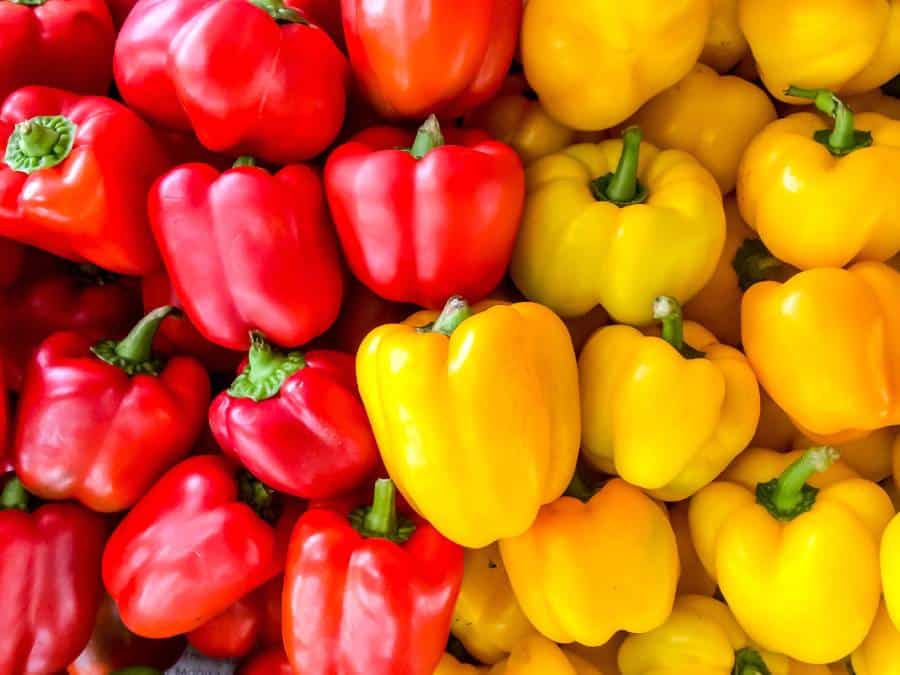
2. Salame

Can you get pizza in Japan?
Yes, it’s possible. You can even get your favorite Western brand pizza in Japan, i.e., Pizza Hut and Domino!
They also have Japanese chains that taste close to what you’d expect from a regular American restaurant.
How much does a pizza cost in Japan?
The prices are surprisingly similar to what you would pay in the US.
You can get a large pizza for about 1,000 yen, although some companies charge customers more if they’re outside the major cities.
Where can I find Pizza Hut in Japan?
Pizza Hut is a famous restaurant in Japan; there’s even one at the Osaka International Airport.
However, the only stores I know open 24 hours a day and seven days a week are at the Nagoya and Tokyo (Narita) airports.
To my recollection, they’re not serving pizza as hot as you would typically expect.
Is it possible to order Pizza Hut delivery in Japan?

Yes, it is! It’s probably faster than what you’re used to if you’ve only ordered Domino’s before, and the price is about the same (Y1,000 for a large pizza).
Just remember, all the locations I mentioned above don’t have delivery, so if you want to order in advance, it’s best to contact them before visiting.
Japan has pizza chains that offer prices similar to American chains for average citizens.
They’re more for your regular consumer + salarymen who want a quick bite at work or on their way home.
The price ranges for Pizza Hut in Japan are the same as Domino’s–they charge more if you’re outside the major cities.
Expect to pay Y1,000 for a large pizza at most locations in Tokyo, while you could get one for as low as Y780 at an Osaka location.
Orders for Pizza Hut delivery in Japan can be done ahead of time, and they will come to your location as long as you order from a store that is open 24 hrs.
The stores nearest to me are not open late at night, so I cannot vouch for the quality/freshness of the pizza if it’s past 11 pm. You might want to call first.
You can also check out Japan’s pizza chains like Sun-coast, Shakey’s, and Royal Host if you don’t mind spending more money on your regular salaryman/woman, like 1,000 yen for a large pizza (which is the same as what you’d find at Pizza Hut).
Remember that not all Japanese pizza is pepperoni, as you might expect from American chains.
So it’s best to ask the store attendant if they have pepperoni before ordering.
What do the Japanese put on pizza?
In Japan, putting mayo or ketchup on a pizza is not shared. Instead, they cover their pizzas with teriyaki sauce and cabbage, so we haven’t caught onto the idea of putting those two things together in America.
Surprisingly, I’ve found that restaurants in China and Korea take their pizza game up by adding local flavors like sweet and sour sauce or chili paste. I guess for them; it’s like pizza fusion!
Some franchise restaurants in Japan serve pizzas with Japanese-style toppings like crab meat (Kani) or tuna/mayo-based (maguro).
If you’re the adventurous type, who isn’t afraid to try new flavors, give those pizzas ago!

